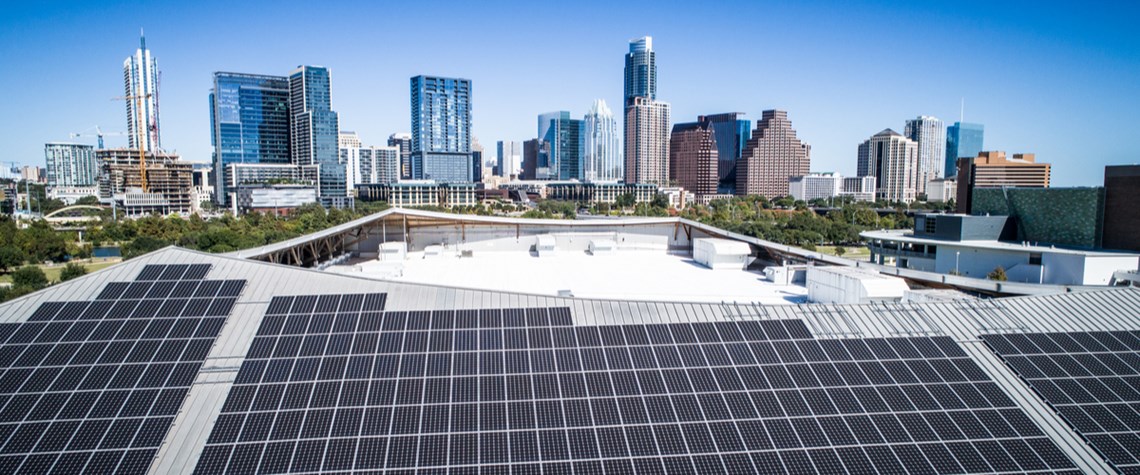You can read more stories like this by subscribing to our monthly Energy Transition newsletter here
“The history of energy innovations strongly confirms the proposition that economic depressions act as triggers of innovative activity” Vaclav Smil in Energy and Civilization: A History
There is no need to rehash here the powerful oversupply and under-demand conditions facing the oil and gas sector courtesy of the Opec+ price wars and Covid-19. Some oil and gas companies are or will be down for the count. Those that remain will be challenged to create new strategies, effectively from scratch. With a clear-eyed sense of purpose, oil and gas companies can and should turn toward, and ultimately profit from, the energy transition. The question is how. In order to get there, shared facts are helpful. Let us propose two:
Fact #1: The energy transition is well underway. The levelised cost of energy for renewable resources has continued to drop—plummet, in the case of solar—and battery storage and offshore wind technologies are poised to do the same. While top-down policies addressing climate change from national governments and international agencies have made minimal impact, bottom-up state and local activities together with corporate renewable energy procurement and environmental, social and governance (ESG) initiatives have propelled the energy transition forward.
Fact #2: Energy transitions are notoriously slow. As Vaclav Smil has chronicled, several generations spanning 50 to 75 years are typically required for new resources to dislodge incumbents in global energy markets. The current energy transition might occur faster than previous transitions, in part catalysed by Covid-19. However, replacing massive quantities of high-energy-density liquid fuels in transportation, and producing iron, cement, plastics and chemicals without burning fossil fuels or otherwise releasing high concentrations of carbon, present enormous challenges.
Oil and gas companies can and should play a primary role in the energy transition. Oil and gas majors in particular have extensive assets and knowledge, providing a solid base from which they may branch out and redefine themselves broadly as ‘energy’ companies, untethered from particular energy sources. As has been noted previously in Petroleum Economist, this is already happening and the trend predates the current crises, most notably with an increasing number of IOCs entering the utilities sector. However, smaller, specialised oil and gas companies fortunate enough to survive Covid-19 may have difficulty identifying and capitalising on the opportunities the energy transition presents. This article proposes an opportunity that is particular to the midstream sector.
Midstream companies link energy to modern life
“[The] high-energy-density needs [of urban life] could not be supported without cheap means of long-distance transportation of food and fuel, and later without the transmission of electricity” Vaclav Smil, in Energy and Civilization: A History
Pipelines are indispensable to modernity. Historians have convincingly made the case that without the completion of the ‘Big Inch’ pipeline bringing East Texas oil to the Northeast in 1943, the Allied Powers would not have won the Second World War. Reincarnated as the Texas Eastern natural gas pipeline, the same transmission pipeline transformed the power markets in the northeastern US.
As ‘energy’ gets reincarnated, there is a massive opportunity for midstream companies to connect areas of rich renewable resources with load centres via high-voltage direct current cables (HVDC), either by placing them directly in existing pipelines or by burying them parallel to pipelines along the same rights-of-way. Texas could continue on as America’s beating heart, pumping clean energy to the rest of the nation through the same vital pipeline corridor arteries that exist today.
If that sounds like too grand a vision—after all, Fact #2 says energy transitions require enormous infrastructural investment and must overcome the inertia of deeply embedded energy systems—then let us start instead with a less grandiose proposal. The Texas Panhandle and the Permian basin are home to two of North America’s most prolific oil and gas plays and are the source of hundreds of thousands of miles of oil and gas pipelines. The Texas Panhandle and the Permian basin also happen to have exceptionally abundant wind and solar resources, including the majority of the Electric Reliability Council of Texas’s (ERCOT’s) 24GW of existing wind capacity and 60GW of solar projects in the ERCOT interconnection queue. Rig counts and common sense suggest that near- and medium-term oil and gas exploration activity in these regions will be reduced in response to low price signals. And if you accept Fact #1, over the long term oil and gas production will trend downward in correlation with the energy transition.
At the same time, the pipelines that emanate out of the Texas Panhandle and the Permian basin traverse several of the fastest-growing cities in America as they carry their hydrocarbons east toward the industrial and petrochemical complex and deep-water ports along the Gulf Coast. Solar tends to produce on-peak and Panhandle wind tends to blow at night, presenting a unique opportunity to alleviate congestion on the alternating current grid with a direct current line connecting clean generation with load at high utilisation rates. And if electric vehicle growth projections are to be believed, the possibility of significant new demand for electricity—especially clean energy—as entire fleets of Dallas, Austin and San Antonio buses and delivery trucks go electric further enhances the value proposition.
From Keystone XL to Clean Line
Building new electrical transmission lines is a notoriously costly and time-consuming endeavour. Major obstacles typically include landowner opposition to the use of eminent domain, Nimbyism in response to the eyesore of overhead lines and significant permitting requirements. The list of names who have tried and failed to develop transmission lines linking clean generation and electrical load is long and illustrious. In addition to the typical costs associated with transmission development, the incremental costs of laying HVDC cable in or adjacent to pipelines will also need to work in the financial model.
However, there are a few key factors that suggest this is an idea that’s time may have arrived. Continued HVDC research and development and increasing real-world deployments, especially in Europe, have yielded significantly improved technologies at lower costs. By co-locating transmission lines within an existing right of way that has already been disturbed from its natural state, and furthermore by putting the HVDC cables underground, the environmental impacts and permitting requirements of the project are minimised. Privately owned transmission lines avoid the time consuming public utility commission approval process. And if we start small, by commencing in the Panhandle or Permian basin and ending in Central Texas or Houston, certain federal approvals would be avoided by remaining entirely intrastate.
A pipeline company would likely want to partner with a developer. Depending upon the midstream company’s desired long-term involvement, the transaction could be structured as a broad or narrow joint venture, a real property lease or equivalent, or a simple divestiture of the pipeline and/or right of way. The project would need to obtain some permits depending upon its location and route. Additionally, the project might need to negotiate with landowners depending upon the pipeline corridor’s original right-of-way documents. Assuming project financing is contemplated, the project sponsors would need to negotiate offtake agreements for long-term purchase of product or transmission capacity—familiar terrain for pipeline companies. And, of course, there would be engineering, procurement and construction agreements with complex interdependent scopes, timelines and liabilities, which ought to sound vaguely familiar if not old hat for oil and gas guys.
We are at a pivotal moment in the energy industry. The author hopes that the particular idea presented might be actionable. Perhaps more importantly, the author also hopes to encourage others in the oil and gas sector to foresee rather than forestall. By creatively assessing the collective strengths of the oil and gas sector, we will find significant potential contributions to the energy transition.








Comments